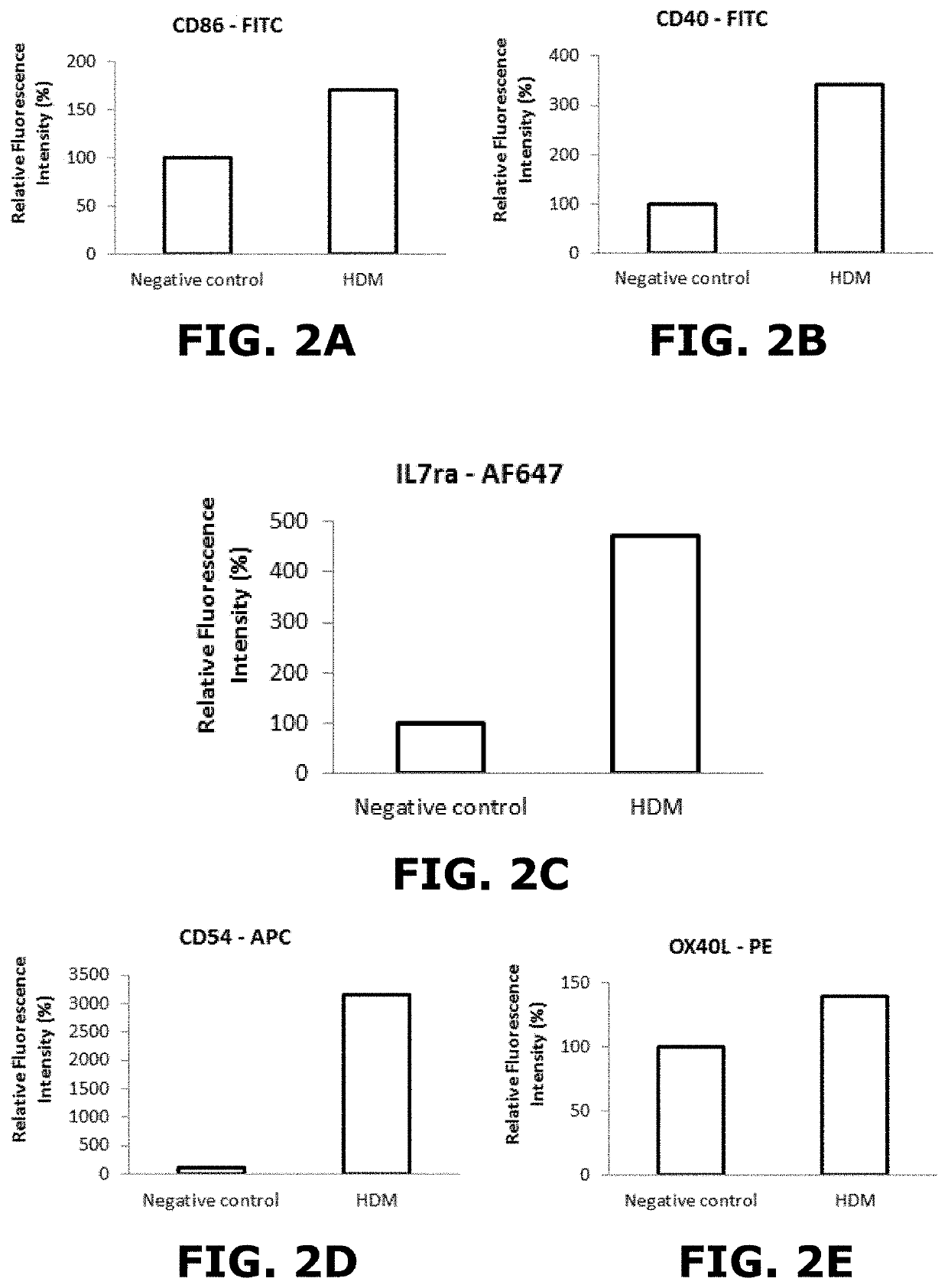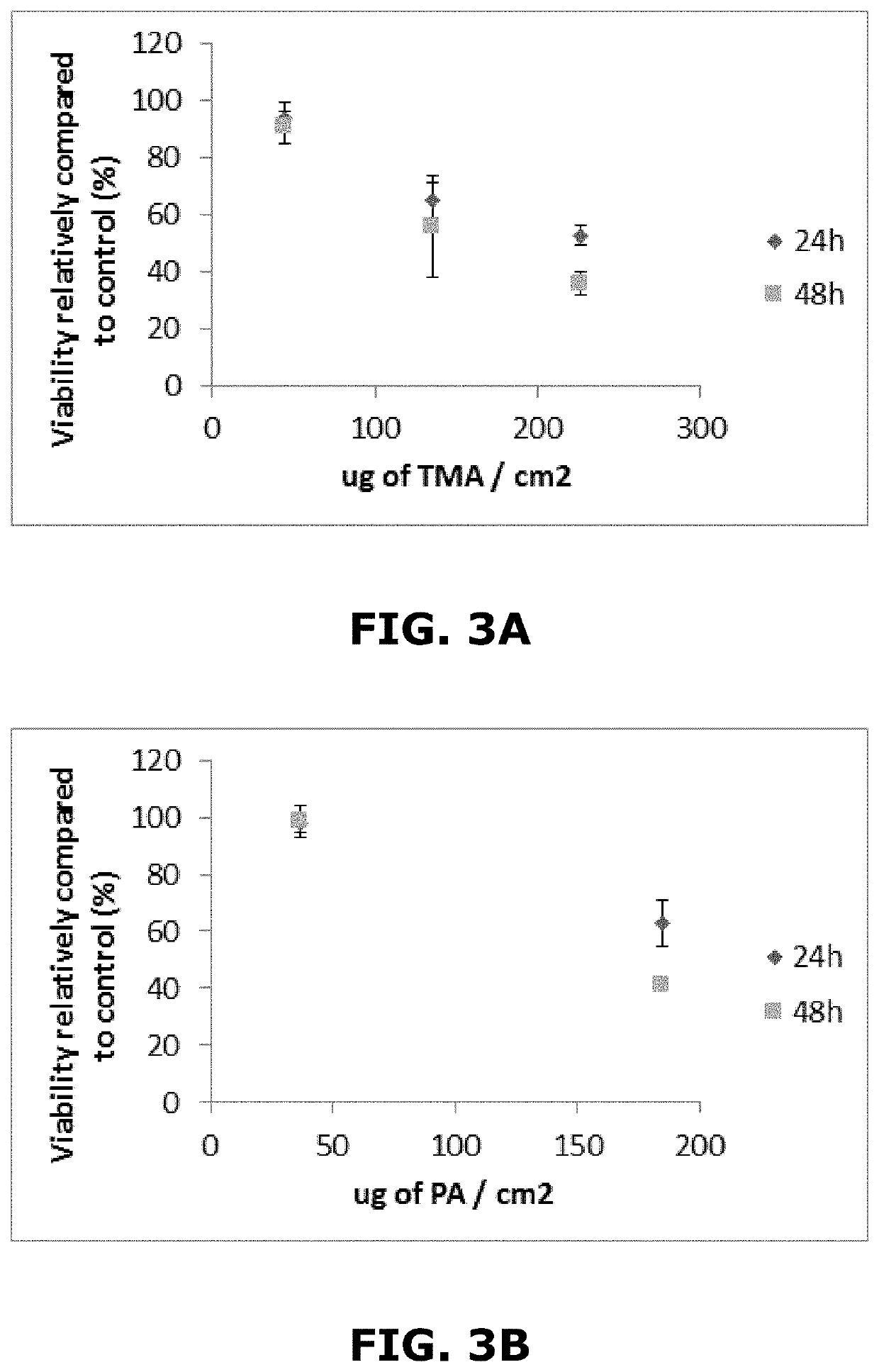Three-dimensional in vitro lung model, process for preparing said model, and its use for determining and /or predicting the sensitizing effects of inhalable products
- Summary
- Abstract
- Description
- Claims
- Application Information
AI Technical Summary
Benefits of technology
Problems solved by technology
Method used
Image
Examples
example 1
[0071]In this example are used the following cell lines: A549, EA.hy926, THP-1 and Mϕ-THP-1. Their respective characteristics are as follows:
[0072]Cell line A549 corresponds to Human bronchial epithelial cells with ability to produce surfactant;
[0073]EA.hy926 cell line is a somatic cell hybrid with endothelial characteristics;
[0074]THP-1 is a human monocytic leukemic cell line; and
[0075]Mϕ-THP-1 are macrophages derived from THP-1 cells, differentiated with PMA (Phorbol-12-myristate-13-acetate) or with 1,25-dihydroxyvitamin D3.
[0076]Preparation of the Different Media:
[0077]The protocols used are as follows:
[0078]EA.hy926 medium:[0079]Remove 60 mL of DMEM (Dulbecco's Modified Eagle's medium) medium from a new bottle (500 mL) and add 50 mL of FBS (10%), then 5 mL of HEPES stock solution (250 mM; sterile, filtered) to get a HEPES buffered medium (25 mM),[0080]Preservation with 5 mL Pen / Strep (penicillin / streptomycin).
[0081]Coculture 10% medium:[0082]Remove 5 mL of DMEM media from a new ...
example 2
[0158]Inserts prepared according to example 1 were exposed to chemical compounds and to positive controls using the Vitrocell® Cloud system (Vitrocell, Waldkirch, Germany). All compounds were diluted in a 1 / 1(v / v) solution of sterile saline solution and PBS.
[0159]Exposure to HDM (House Dust Mite):
[0160]House dust mite is a very common allergen which is associated with asthma and allergic rhinitis. As no data were found for in vitro exposure, concentration to which cells of the lung model of the present invention were to be exposed was determined on the basis of in vivo studies. In vivo, mice are generally exposed intra-nasally to 1 pg of Der p1 (major protein allergen of HDM). Knowing that the alveolar surface of mice is 82.2 cm2, a concentration of 0.01 μg / cm2 was calculated to expose to the insert (being 45 pg / insert).
[0161]Exposure to Chemicals:
[0162]Inserts were exposed to a range of concentrations to chemical respiratory irritants and sensitizers in order to determine first the...
example 3
[0177]The Vitrocell® Cloud system (Vitrocell, Waldkirch, Germany) was used for the delivery and exposure of cells to nebulize the compounds diluted in PBS and depending on the vehicle control, in sterile water or sterile water plus DMSO.
[0178]House Dust Mites (HDM), protein Bet v1 (an additional known protein sensitizer) and Acrolein (Acr) were diluted in sterile water. Phthalic anhydride (PA), Trimellitic anhydride (TMA) and Methyl salicylate (MeSa) were diluted in DMSO.
[0179]Viability was assessed using the Alamar Blue assay 24 h and 48 h after exposure according to the protocol detailed in example 2 above.
[0180]The concentration leading to 25% of cytotoxicity (meaning 75% of viability: CV75) relatively compared to the vehicle control was determined using the graphs presented in example 2.
[0181]To measure the expression of cell surface markers and the release of different cytokines, the cells of inserts prepared according to example 1 above were exposed to the CV75 or, when it was...
PUM
 Login to View More
Login to View More Abstract
Description
Claims
Application Information
 Login to View More
Login to View More - R&D
- Intellectual Property
- Life Sciences
- Materials
- Tech Scout
- Unparalleled Data Quality
- Higher Quality Content
- 60% Fewer Hallucinations
Browse by: Latest US Patents, China's latest patents, Technical Efficacy Thesaurus, Application Domain, Technology Topic, Popular Technical Reports.
© 2025 PatSnap. All rights reserved.Legal|Privacy policy|Modern Slavery Act Transparency Statement|Sitemap|About US| Contact US: help@patsnap.com



